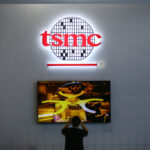
Global semiconductor revenue to shrink by 4% in 2023, the first contraction since 2019 | Source: Shutterstock/Raimundas
Global semiconductor revenue to shrink by 4% in 2023, the first contraction since 2019
- WSTS forecast that the global semiconductor market would shrink 4% in 2023 to US$557 billion, the first annual contraction since 2019.
- Not too far from that projection, Gartner predicts the global semiconductor revenue could decline by 3.6% in 2023, to total US$596 billion.
- Both WSTS and Gartner foresee the memory market, which makes up more than one-fifth of the total, falling 17% and 16%, respectively.
The global semiconductor industry were dominating headlines since 2020, when the pandemic forced the world to shut down. At the same time, the impact of digital on lives and businesses were accelerating like never before, and in turn, semiconductor markets boomed. By 2021, sales grew by more than 20% to about US$600 billion in 2021.
What many experts were sure of was the fact that the semiconductor industry is poised for a decade of growth and by 2030, it is projected to become a trillion-dollar industry. It is, however, not all good news. In fact, the short-term outlook for semiconductor revenue has worsened, according to experts. Essentially, oversupply is becoming inevitable with the worsening economic situation.
Gartner’s practice VP Richard Gordon, in a forecast said, “The short-term outlook for semiconductor revenue has worsened. Rapid deterioration in the global economy and weakening consumer demand will negatively impact the semiconductor market in 2023.” For Gartner, the global semiconductor revenue is projected to decline 3.6% in 2023. In contrast, the market is on pace to grow 4% and total US$618 billion this year.
“Global semiconductor revenue is forecast to total $596 billion in 2023, down from the previous forecast of US$623 billion,” Gartner said in a statement. A separate projection by the World Semiconductor Trade Statistics (WSTS) also suggested a contraction of about the same level. “The global semiconductor market is forecast to shrink 4% in 2023 to US$557 billion, the first annual contraction since 2019,” WSTS said.
Both WSTS and Gartner reckon that while chipmakers have expanded output in response to a supply crunch, consumer demand for devices like smartphones and computers appears to be declining. “Currently, the semiconductor market is polarized between the consumer-driven markets and enterprise-driven markets,” Gartner said.
The tech research arm reckon weakness in the consumer-driven markets is being driven largely by the decline in disposable income caused by rising inflation and interest rates, and also “by the reprioritization of consumer discretionary spending to other areas such as travel, leisure and entertainment, which are having a negative knock-on effect on technology purchases,” the statement reads.
Meanwhile, the enterprise-driven markets, such as enterprise networking, enterprise computer, industrial, medical and commercial transportation, have, so far, been relatively resilient despite looming macro-economic slowdown and geopolitical concerns. “The relative strength in the enterprise-driven markets comes from strategic investments by corporations that are looking to strengthen their infrastructure,” Gordon of Gartner noted.
Is 2023 not the year of the memory market?
The global semiconductor market next year will mainly be dragged down by the memory segment, both WSTS and Gartner’s forecasts show. “In this latest forecast, this category is projected to fall to US$112 billion in 2023, dropping by 17% compared to the previous year,” WSTS said in its statement.
In fact, for the remainder of 2022, Gartner reckon the memory market is witnessing faltering demand, swollen inventories and customers pressing for considerably lower prices. “As a result, the memory market will remain flat in 2022 and is forecast to decline 16.2% in revenue in 2023,” it said.
Semiconductor growth in Japan, US, Europe but not APAC and China
WSTS predicts Japan, the US and Europe to witness growth in 2023, but a 7.5% decline is forecast for the rest of the Asia Pacific region including China, which is the world’s largest semiconductor market and accounts for over 30% of the total. China’s influence also means the global semiconductor market could face an even steeper decline in 2023 than what WSTS is forecasting now.
READ MORE
- Strategies for Democratizing GenAI
- The criticality of endpoint management in cybersecurity and operations
- Ethical AI: The renewed importance of safeguarding data and customer privacy in Generative AI applications
- How Japan balances AI-driven opportunities with cybersecurity needs
- Deploying SASE: Benchmarking your approach


